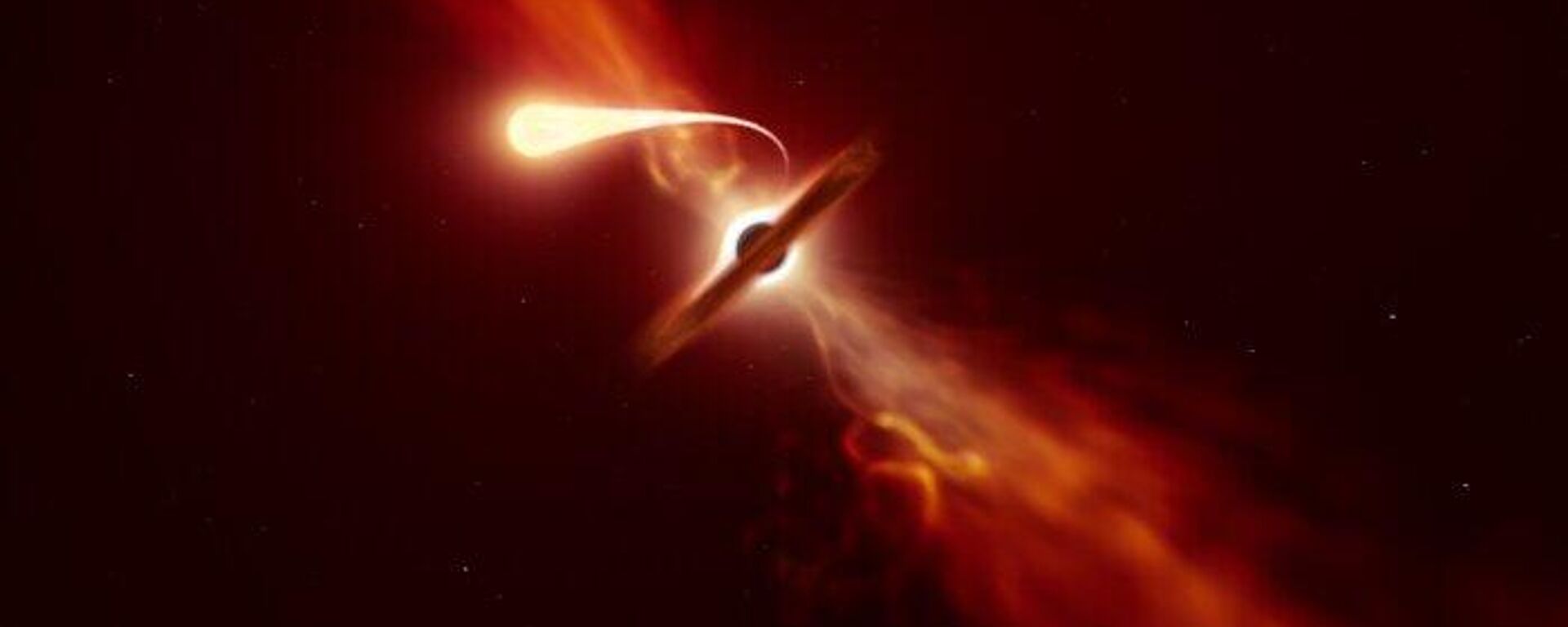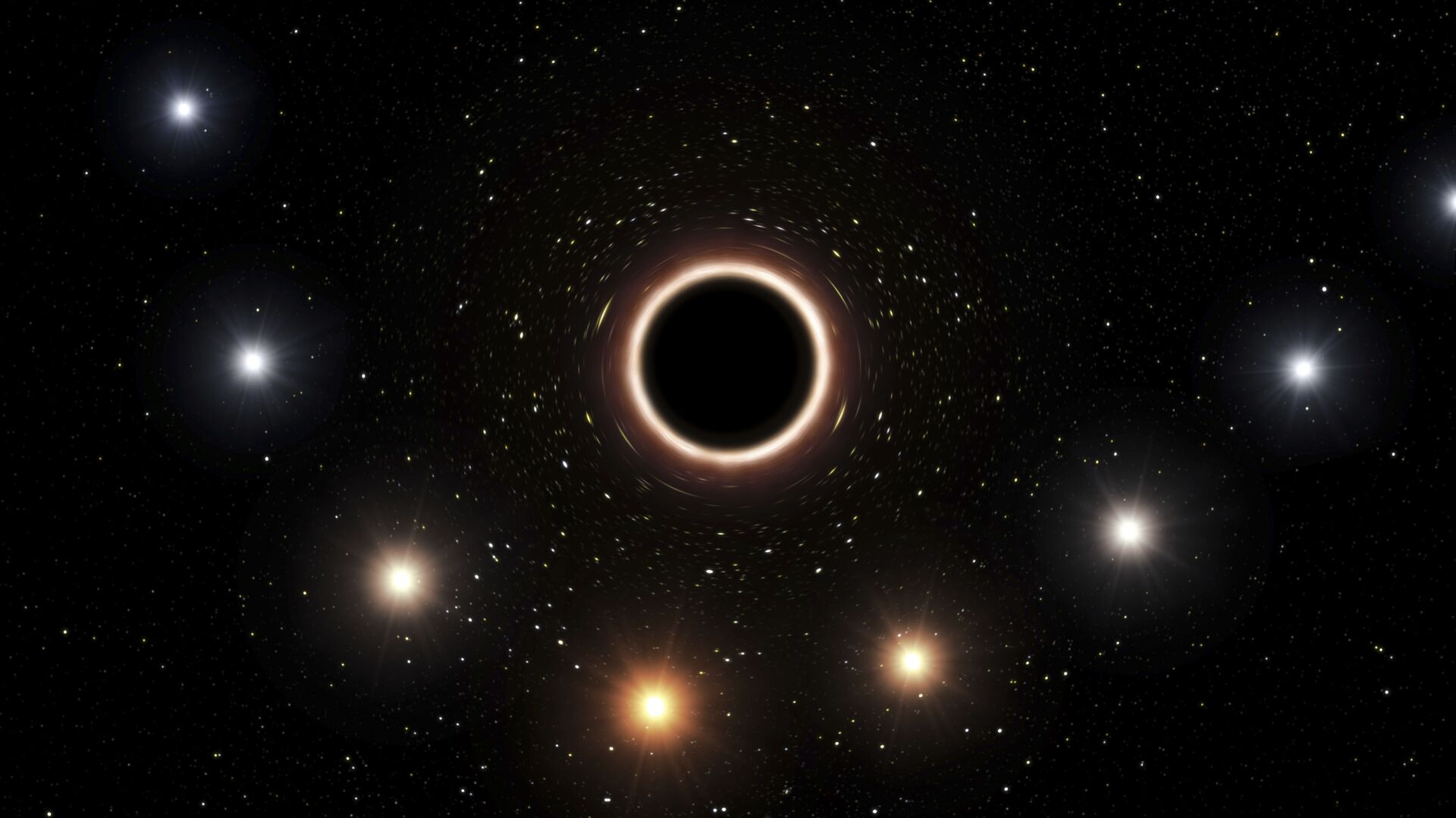https://sputnikglobe.com/20240225/unveiling-nestars-celestial-matryoshka-dolls-prompt-fresh-look-at-cosmos-1116976274.html
Unveiling 'Nestars': Celestial Matryoshka Dolls Prompt Fresh Look at Cosmos
Unveiling 'Nestars': Celestial Matryoshka Dolls Prompt Fresh Look at Cosmos
Sputnik International
A new theory, rooted in Einstein's concept of general relativity, suggests "nestars" resembling Russian nesting dolls, challenging traditional concepts of celestial bodies and encouraging exploration of gravitational phenomena.
2024-02-25T17:09+0000
2024-02-25T17:09+0000
2024-02-25T18:56+0000
beyond politics
science & tech
society
albert einstein
world
https://cdn1.img.sputnikglobe.com/img/107899/09/1078990949_0:120:3215:1928_1920x0_80_0_0_980373039d53cb9e211adf1943ba96fc.jpg
A new solution to Albert Einstein's theory of general relativity suggests hypothetical gravitational stars or “nestars”. The theorized bodies look like black holes could be made from stacked stars — ”gravastars,” like Russian tea dolls, according to a recent study published in the journal Classical and Quantum Gravity.Einstein formulated the theory of general relativity in 1915, which has since proven remarkably accurate in predicting cosmic phenomena. According to the theory, gravity arises from the bending of spacetime by mass. It has predicted the existence of black holes and gravitational waves, confirmed through observation.While theoretically derived from general relativity, concepts such as white holes and wormholes have yet to be observed. The uncertainty surrounding whether these predictions will prove accurate leaves Einstein's legacy open to further exploration.In 2001, the theoretical concept of "gravastars" was developed from general relativity. Gravastars are dense celestial bodies with dark energy cores. Dark energy, responsible for accelerating the universe's expansion, counteracts the stars' inward gravitational pull, preventing their collapse.A recent solution to contradictions general relativity proposes a fascinating aspect of gravastars: they could be stacked within each other in a configuration dubbed "nestars."During the First World War, physicist Karl Schwarzschild devised the first solution to Einstein's field equations, outlining the concept of black holes. He introduced the Schwarzschild radius, marking the boundary where escape velocity exceeds light speed. That defines the event horizon, beyond which light cannot escape, making the 'black hole' black. Schwarzschild's solution also proposed a central singularity within black holes, where conventional physics breaks down. The confirmation of black holes' existence in 1971, the later identification of Sagittarius A* as a supermassive black hole and capturing the first image of a black hole's silhouette in 2019 validated Einstein's theory. In 2001, Pawel Mazur and Emil Mottola proposed gravastars as black hole alternatives, suggesting they possess similar density but lack the event horizon or singularities. Gravastars might have a core of dark energy instead. The newer concept of nestars challenges this, proposing that the properties of stacked gravastars might differ slightly. However, the theoretical possibilities permitted by general relativity do not guarantee their real-world existence.
https://sputnikglobe.com/20240131/black-holes-particle-accelerator-propels-earths-high-speed-cosmic-rays-1116510505.html
world
Sputnik International
feedback@sputniknews.com
+74956456601
MIA „Rossiya Segodnya“
2024
Chimauchem Nwosu
https://cdn1.img.sputnikglobe.com/img/07e7/09/01/1113046371_0:99:1536:1635_100x100_80_0_0_9c5c627283eca931c39fe4852bbb301c.jpg
Chimauchem Nwosu
https://cdn1.img.sputnikglobe.com/img/07e7/09/01/1113046371_0:99:1536:1635_100x100_80_0_0_9c5c627283eca931c39fe4852bbb301c.jpg
News
en_EN
Sputnik International
feedback@sputniknews.com
+74956456601
MIA „Rossiya Segodnya“
Sputnik International
feedback@sputniknews.com
+74956456601
MIA „Rossiya Segodnya“
Chimauchem Nwosu
https://cdn1.img.sputnikglobe.com/img/07e7/09/01/1113046371_0:99:1536:1635_100x100_80_0_0_9c5c627283eca931c39fe4852bbb301c.jpg
general relativity theory, nestars, gravastars, black holes, celestial bodies, schwarzschild radius, event horizon, dark energy, cosmic phenomena, theoretical physicists, astrophysics, celestial evolution, gravity, universe, space-time dynamics.
general relativity theory, nestars, gravastars, black holes, celestial bodies, schwarzschild radius, event horizon, dark energy, cosmic phenomena, theoretical physicists, astrophysics, celestial evolution, gravity, universe, space-time dynamics.
Unveiling 'Nestars': Celestial Matryoshka Dolls Prompt Fresh Look at Cosmos
17:09 GMT 25.02.2024 (Updated: 18:56 GMT 25.02.2024) A new theory, rooted in Einstein's concept of general relativity, suggests "nestars" resembling Russian Matryoshka nesting dolls, challenging traditional concepts of celestial bodies and encouraging exploration of gravitational phenomena.
A new solution to Albert Einstein's theory of general relativity suggests hypothetical gravitational stars or “nestars”.
The theorized bodies look like black holes could be made from stacked stars — ”gravastars,” like Russian tea dolls, according to a recent
study published in the journal Classical and Quantum Gravity.
Einstein formulated the theory of general relativity in 1915, which has since proven remarkably accurate in predicting cosmic phenomena. According to the theory, gravity arises from the bending of spacetime by mass. It has predicted the existence of black holes and gravitational waves, confirmed through observation.
While theoretically derived from general relativity, concepts such as white holes and wormholes have yet to be observed. The uncertainty surrounding whether these predictions will prove accurate leaves
Einstein's legacy open to further exploration.
In 2001, the theoretical concept of "gravastars" was developed from general relativity. Gravastars are dense celestial bodies with dark energy cores. Dark energy, responsible for accelerating the universe's expansion, counteracts the stars' inward gravitational pull, preventing their collapse.
A recent solution to contradictions
general relativity proposes a fascinating aspect of gravastars: they could be stacked within each other in a configuration dubbed "nestars."
"The nestar is like a matryoshka doll; our solution to the field equations allows for a whole series of nested gravastars," said Goethe University theoretical physicist Daniel Jampolski, one of the solution's developers.
During the First World War, physicist Karl Schwarzschild devised the first solution to Einstein's field equations, outlining the concept of black holes. He introduced the Schwarzschild radius, marking the boundary where escape velocity exceeds light speed. That defines the event horizon, beyond which light cannot escape, making the 'black hole' black.

31 January 2024, 17:37 GMT
Schwarzschild's solution also proposed a central singularity within black holes, where conventional physics breaks down. The confirmation of black holes' existence in 1971, the later identification of Sagittarius A* as a supermassive black hole and capturing the first image of a black hole's silhouette in 2019 validated Einstein's theory.
In 2001, Pawel Mazur and Emil Mottola proposed gravastars as black hole alternatives, suggesting they possess similar density but lack the event horizon or singularities. Gravastars might have a core of dark energy instead. The newer concept of nestars challenges this, proposing that the properties of stacked gravastars might differ slightly. However, the theoretical possibilities permitted by
general relativity do not guarantee their real-world existence.
"Unfortunately, we still have no idea how such a gravastar could be created…But even if nestars don't exist, exploring the mathematical properties of these solutions ultimately helps us to better understand black holes,” said Luciano Rezzolla, nestar theory co-developer and Goethe University theoretical physicist.





